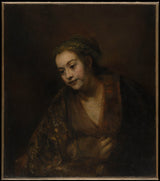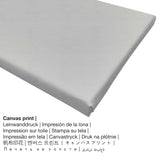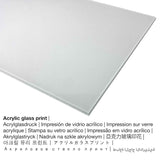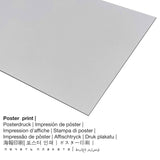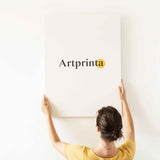Rembrandt van Rijn, 1650 - Hendrickje Stoffels (1626-1663) - mbipụta nka mara mma.
Ụtụ gụnyere. Mbupu gbakọrọ na ndenye ọpụpụ.
Things you should know about the art replica of the painting titled Hendrickje Stoffels (1626-1663)
Nkà nka ochie a Hendrickje Stoffels (1626-1663) was created by the Dutch painter Rembrandt van Rijn. The more than 370 mbụ dị afọ tụrụ nha: 30 7/8 x 27 1/8 na (78,4 x 68,9 cm) e were kwa ihe-ọcha tee ya mmanụ na kwaaji. Ọzọkwa, ihe osise a dị n'ụdị Ụlọ ihe ngosi nka nke Metropolitan digital collection. With courtesy of: The Metropolitan Museum of Art, New York, Gift of Archer M. Huntington, in memory of his father, Collis Potter Huntington, 1926 (ọha na eze). Ebe kredit nke ọrụ nka: Onyinye nke Archer M. Huntington, na ebe nchekwa nna ya, Collis Potter Huntington, 1926. Nhazi nke mmepụta dijitalụ bụ Eserese ma nwee oke nke 1: 1.2, which means that the length is 20% shorter than the width. The painter Rembrandt van Rijn was an artist, whose artistic style was primarily Baroque. The artist was born in 1606 na Leiden ma nwụọ mgbe ọ dị afọ 63 na 1669.
Họrọ ihe ị họọrọ
Anyị na-enye ụdị nha na ihe dị iche iche maka ngwaahịa ọ bụla. Anyị na-ahapụ gị ka ịhọrọ n'ime ụdị ndị a:
- Mbipụta iko acrylic (nke nwere ezigbo mkpuchi iko): The acrylic glass print, often labelled as a plexiglass print, transforms your favorite original into great décor. The artwork is being made thanks to the help of state-of-the-art UV printing machines. It makes impressive and rich color hues. Our real glass coating protects your selected fine art print against sunlight and heat for decades.
- Mbipụta nke aluminom: Aluminium Dibond prints are metal prints with an impressive depth - for a modern look and non-reflective surface. The Aluminium Dibond Print is the excellent introduction to fine art replicas made on aluminum. Colors are bright and vivid, the details appear crisp and clear, and you can feel a matte appearance of the print. The print on Aluminum Dibond is one of the most popular entry-level products and is a sophisticated way to showcase fine art reproductions, since it draws attention on the whole artwork.
- Kwaaji: A canvas print, which should not be confused with a real canvas painting, is a digital image applied onto canvas material. A canvas generates the unique impression of three-dimensionality. Besides, canvas generates a lovely and pleasing impression. A canvas of your favorite masterpiece will allow you to transform your fine art print into a large artwork as you would see in a true gallery. Hanging your canvas print: A canvas print has the advantage of being low in weight, which means that it is easy and straightforward to hang the Canvas print without any wall-mounts. Canvas prints are suited for any type of wall.
- Akwụkwọ mmado ebipụtara (akwa akwa akwa): The poster is a printed flat canvas with a slightly roughened surface finish. Please note, that depending on the size of the canvas poster print we add a white margin of something between 2-6cm round about the print motif in order to facilitate the framing.
Ederede iwu: We try all that we can in order to depict our art products with as many details as possible and to illustrate them visually. At the same time, the colors of the printed materials, as well as the printing may diverge to a certain extent from the representation on the screen. Depending on your screen settings and the quality of the surface, colors might not be printed one hundret percent realistically. Bearing in mind that all fine art prints are printed and processed by hand, there may also be minor deviations in the motif's exact position and the size.
Nkọwa ngwaahịa ahaziri ahazi
| Nkewa ngwaahịa: | ọmarịcha nka |
| Mmeputakwa: | dijitalụ mmeputakwa |
| Usoro mmepụta: | Mbipụta UV ozugbo (mbipụta dijitalụ) |
| Mmalite ngwaahịa: | arụpụtara na Germany |
| Ụdị ngwaahịa: | a na-achọ |
| Ngwaahịa were: | ihe ndozi ụlọ, mma mgbidi |
| Nhazi: | nhazi ihe osise |
| Oke akụkụ onyonyo: | 1: 1.2 |
| Nsonaazụ: | ogologo bụ 20% mkpụmkpụ karịa obosara |
| Ngwa ngwaahịa dị: | ígwè ebipụta (aluminium dibond), acrylic glass print (nwere ezigbo mkpuchi iko), mbipụta akwụkwọ mmado (akwụkwọ kwaaji), akwụkwọ akwa akwa. |
| Mbipụta kanvas (akwa akwa na etiti ihe ndọtị) dị iche iche: | 50x60cm - 20x24", 100x120cm - 39x47", 150x180cm - 59x71" |
| Mbipụta iko acrylic (nwere ezigbo mkpuchi iko) dị iche iche: | 50x60cm - 20x24", 100x120cm - 39x47", 150x180cm - 59x71" |
| Mbipụta akwụkwọ mmado (akwụkwọ kwaaji): | 50x60cm - 20x24", 100x120cm - 39x47" |
| Nhọrọ aluminom dibond (ihe aluminom) nhọrọ: | 50x60cm - 20x24", 100x120cm - 39x47" |
| ụba: | agunyeghi |
Ozi nka ahaziri
| Aha eserese: | "Hendrickje Stoffels (1626-1663)" |
| Nhazi nke ihe nka: | sere |
| Otu izugbe: | nka ochie |
| Narị afọ nka: | 17th narị afọ |
| Year: | 1650 |
| Afọ nka: | karịa afọ 370 |
| Usoro izizi: | mmanụ na kwaaji |
| Nha nke ihe nka izizi: | 30 7/8 x 27 1/8 na (78,4 x 68,9 cm) |
| Ụlọ ihe ngosi nka / ebe: | Museumlọ ihe ngosi nka nke Obodo |
| Ebe ngosi nka: | New York City, New York, Njikota Obodo Amerika |
| E Nwere na: | Museumlọ ihe ngosi nka nke Obodo |
| Licensedị ikike: | ngalaba ọha |
| Site n'aka: | The Metropolitan Museum of Art, New York, Onyinye Archer M. Huntington, na ebe nchekwa nna ya, Collis Potter Huntington, 1926 |
| Ebe E Si Nweta: | Onyinye nke Archer M. Huntington, na ebe nchekwa nna ya, Collis Potter Huntington, 1926 |
Onye na-ese ihe
| Aha onye nka: | Rembrandt van Rijn |
| okike nke onye nka: | nwoke |
| Obodo onye nka: | Dutch |
| Ọrụ: | onye na-ese ihe |
| Mba onye si: | mba netherland |
| Otu nka: | nna ukwu ochie |
| Ụdị nke onye na-ese ihe: | Baroque |
| Oge ndu: | 63 afọ |
| Afọ ọmụmụ: | 1606 |
| Ebe omuma: | Leiden |
| Nwuru: | 1669 |
| Ebe ọnwụ: | Amsterdam |
© Nwebiisinka nke - Artprinta (www.artprinta.com)
Ozi izizi gbasara ọrụ nka sitere na weebụsaịtị The Metropolitan Museum of Art (© Nwebiisinka - The Metropolitan Museum of Art - Museumlọ ihe ngosi nka nke Obodo)
Hendrickje Stoffels, the daughter of a soldier, worked as Rembrandt’s housekeeper, eventually becoming his common-law wife and mother of his daughter, Cornelia. While no formal portraits of Stoffels survive, she is believed to have modeled for a number of Rembrandt’s paintings, including this work, perhaps intended as a generic image of a courtesan. The figure’s intimate gesture of holding her robe closed with one hand echoes the close observations Rembrandt made of the women in his household in many surviving drawings.

